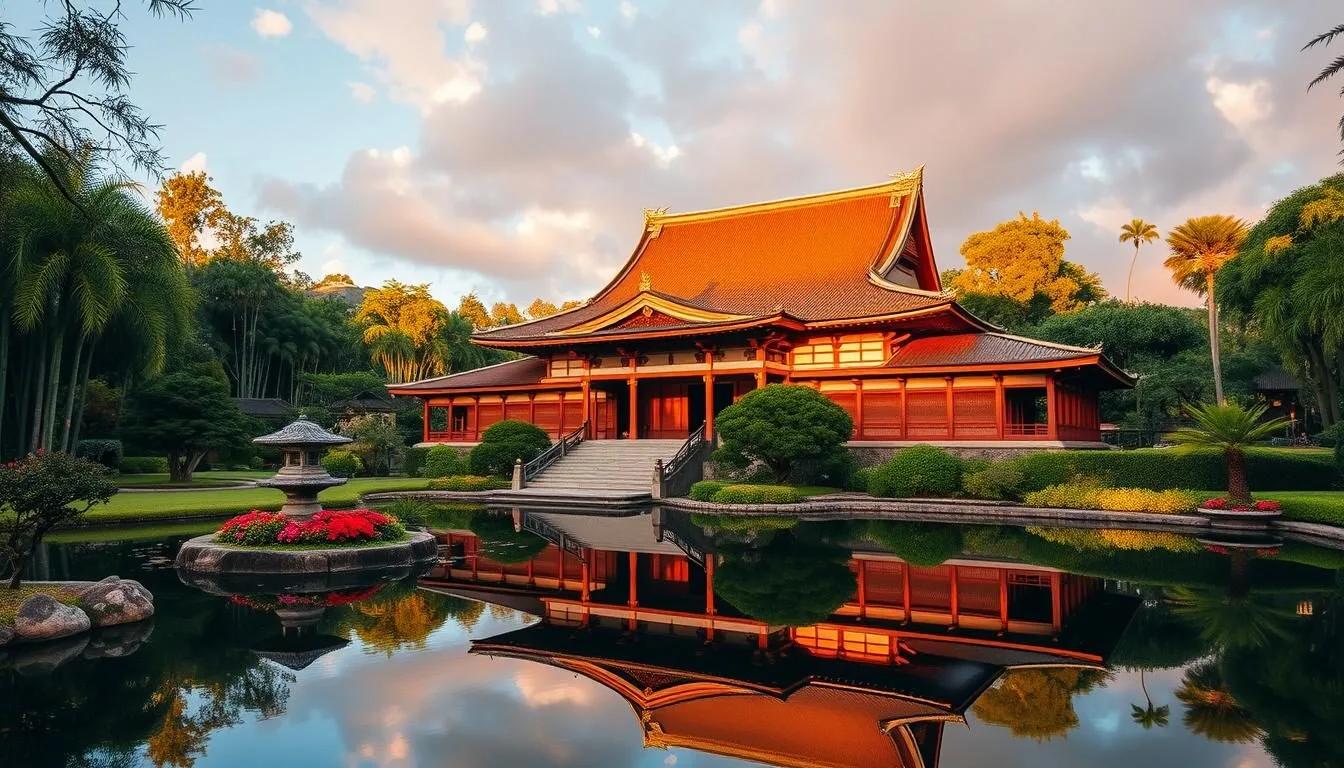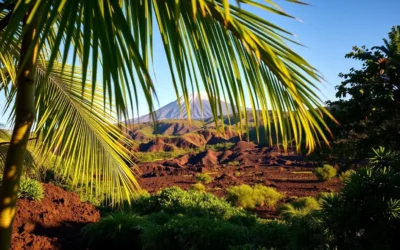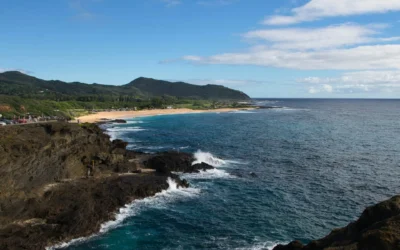✓ Accommodations✓ Flights✓ Rental Cars✓ Tours & Activities
Nestled at the foot of the Ko’olau Mountains, the Byodo-In Temple is a haven of peace and tranquility, offering a unique cultural experience.
As you step into this stunning Buddhist temple, you’ll be surrounded by the beauty of nature and the serenity of the surroundings. The temple, a replica of an 11th-century Japanese temple, is a place where you can reflect, explore, or simply enjoy the picturesque views.
Whether you’re looking for a spiritual escape or a memorable experience, the Byodo-In Temple is a must-visit destination on your trip to Oahu. With its rich history and cultural significance, this temple is sure to leave a lasting impression on you.
The History and Significance of Byodo-In Temple
As you visit the Byodo-In Temple, you’re stepping into a piece of history that bridges Japan and Hawaii. The temple’s presence is a testament to the cultural exchange that has enriched Hawaiian society over the years.
Origins as a Replica of the Japanese Temple
The Byodo-In Temple was built in 1963 as a smaller-scale replica of the 1,000-year-old Byodo-In Temple located in Uji, Japan. This replication was part of the celebration marking the centennial anniversary of the first Japanese immigrants in Hawaii. The temple’s construction was a significant event, symbolizing the enduring connection between Japan and Hawaii.
Commemorating the First Japanese Immigrants to Hawaii
Inaugurated in 1968, the temple commemorates the 100-year anniversary of the arrival of the first Japanese immigrants to Hawaii in 1868. These pioneers, known as Gannenmono or “first-year people,” faced numerous challenges but laid the foundation for the Japanese-American communities. Over the years, their descendants have significantly contributed to Hawaii’s multicultural identity.
Planning Your Visit to Byodo-In Temple, Oahu, Hawaii
Byodo-In Temple, a gem on Oahu, Hawaii, awaits your visit; let’s explore the details to make your trip unforgettable. As you prepare for your journey, understanding the temple’s operational hours and admission details will enhance your experience.
Opening Hours and Best Times to Visit
The Byodo-In Temple is open daily from 9:00 AM to 4:00 PM. To avoid the crowds and enjoy a peaceful visit, consider arriving early in the morning or later in the afternoon. The temple’s serene atmosphere is particularly captivating during these times, allowing for a more contemplative experience.
Entrance Fees and Payment Information
Understanding the entrance fees and payment methods is crucial for a smooth visit. The entrance fee to Byodo-In Temple is reasonably priced at $7 for adults (ages 13-64), $6 for seniors (65+), and $4 for children (ages 2-12), with children under 2 entering for free. As of January 1, 2023, the temple accepts payment by debit and credit card only, so be sure to bring a suitable card. Your entrance fee contributes to the maintenance of the temple grounds and supports the preservation of this cultural landmark.
How to Get to Byodo-In Temple
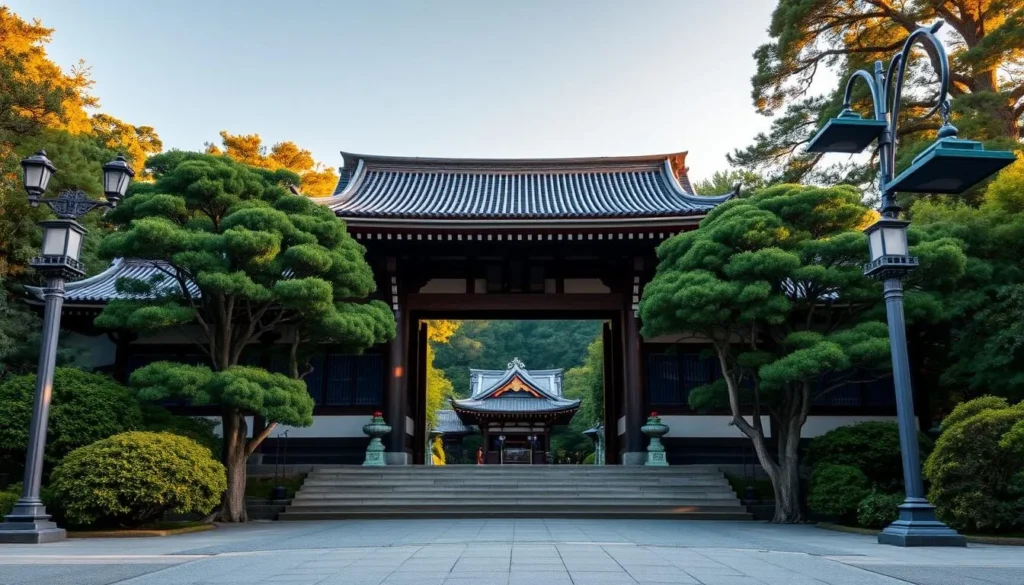
Byodo-In Temple is accessible by car, public transport, or guided tour, making it a convenient stop on your Oahu itinerary. With its serene surroundings and historical significance, it’s a must-visit destination.
Driving Directions from Honolulu and Waikiki
If you’re driving from Honolulu or Waikiki, take the H-1 freeway eastbound, then merge onto the Pali Highway (State Rte 61 North). Continue on the Pali Highway for approximately 11 miles, then turn left onto Valley of the Temples Road. The temple will be on your right.
Public Transportation Options
For those using public transport, you can take TheBus route 56 or 57 from Waikiki. Get off at the Valley of the Temples stop, and walk a short distance to the temple.
Guided Tours That Include the Temple
Many visitors opt for guided Circle Island tours that include Byodo-In Temple. These tours typically provide round-trip transportation from Waikiki hotels, professional guides, and enough time to explore. Popular Circle Island tours often combine the temple with other attractions like the Dole Plantation and North Shore beaches.
What to See at the Temple Grounds
As you step into the serene grounds of Byodo-In Temple, you’ll discover a treasure trove of cultural and spiritual significance. The temple complex is surrounded by 2 acres of lush gardens, slopes, and koi ponds, creating a peaceful atmosphere that invites contemplation and reflection.
The 9-Foot Golden Amida Buddha
The temple is home to a majestic 9-foot golden Amida Buddha statue, a symbol of peace and enlightenment. This impressive statue is a highlight of the temple complex and a must-see for visitors.
The Sacred Bon-Sho Bell
The Sacred Bon-Sho Bell is another significant feature of the temple grounds. This large bell is used during special ceremonies and is a striking example of traditional Japanese craftsmanship.
Phoenix Hall and Its Significance
The main Phoenix Hall, also known as Hoo-do, is the architectural highlight of the complex. This temple building features distinctive curved rooflines and ornate details that exemplify traditional Japanese building design. The hall gets its name from the two phoenix statues perched on its roof, symbolizing renewal and rebirth in Buddhist and Japanese traditions.
| Feature | Description |
|---|---|
| Phoenix Hall | The main temple building, featuring traditional Japanese architecture |
| Amida Buddha Statue | A 9-foot golden statue symbolizing peace and enlightenment |
| Sacred Bon-Sho Bell | A large bell used during special ceremonies, showcasing traditional Japanese craftsmanship |

Exploring the Temple Gardens and Grounds
Upon entering the Byodo-In Temple grounds, you’re greeted by tranquil surroundings that set the tone for a spiritual experience. The temple’s gardens are meticulously maintained, offering a serene atmosphere that complements the historical significance of the temple.
The Meditation Pavilion
The red Meditation Pavilion is a striking feature within the grounds, providing a quiet spot for reflection. Its vibrant color against the natural backdrop creates a visually appealing contrast.
Koi Ponds and Wildlife
The koi ponds are home to a variety of colorful fish, adding to the serene ambiance. The ponds are surrounded by lush vegetation, creating a haven for wildlife and a peaceful spot for visitors.
Photo Opportunities and Scenic Spots
The Byodo-In Temple offers numerous photo opportunities and scenic spots. The frontal view of Phoenix Hall reflected in the koi pond, with the Ko’olau Mountains in the background, is particularly iconic. Early morning visits are ideal for capturing these moments, with softer light and fewer visitors. Don’t miss the chance to snap pictures of the red Meditation Pavilion, the massive bell, and the golden Buddha, all of which make for great spots for memorable photos.

Temple Etiquette and Visitor Guidelines
When visiting Byodo-In Temple, it’s essential to be mindful of the etiquette guidelines to ensure a respectful experience for all visitors. This beautiful temple is not only a historical site but also a place of worship, and your consideration will contribute to the serene atmosphere that many people come to experience.
Dress Code Recommendations
Dress modestly when visiting the temple. Avoid revealing clothing and opt for comfortable attire that allows you to move freely while maintaining respect for the site.
Removing Footwear When Entering the Temple
Be prepared to remove your shoes before entering certain areas of the temple. This practice is a sign of respect and is commonly observed in many Buddhist temples.
Respectful Behavior and Photography Rules
- Maintain a quiet demeanor and be considerate of others who may be meditating or praying.
- Avoid using flash photography inside buildings and refrain from touching religious objects or statues.
By following these guidelines, you can enjoy your visit while respecting the temple and its people.
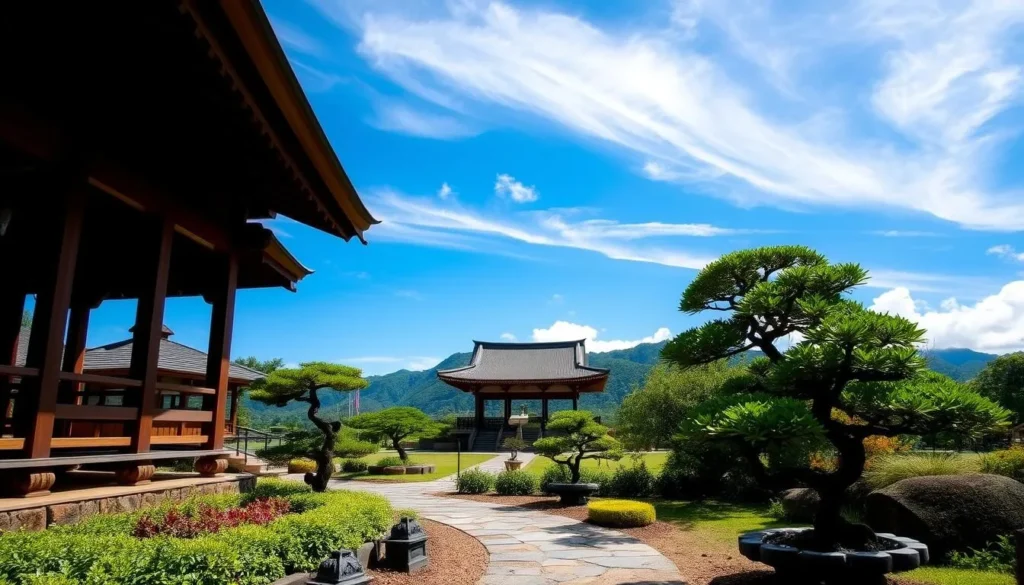
Facilities and Amenities at Byodo-In Temple
As you explore the Byodo-In Temple, you’ll discover a range of amenities and services designed to enhance your visit. The temple grounds are equipped with various facilities to cater to the needs of its visitors.
The Gift Shop and Souvenirs
The Byodo-In Temple has a gift shop where you can purchase souvenirs to commemorate your visit. The shop offers a variety of items, including traditional Buddhist artifacts, books, and local handicrafts. You can find unique mementos to take back home, serving as a reminder of your spiritual experience at the temple.
| Souvenir Type | Description |
|---|---|
| Buddhist Artifacts | Traditional items symbolizing peace and harmony |
| Local Handicrafts | Unique crafts made by local artisans |
| Spiritual Books | Publications on Buddhism and meditation |
Food Options and Refreshments
While visiting the Byodo-In Temple, you can refresh yourself with the available food options. Near the entrance, there are small stands selling snacks, refreshments, and simple lunch items. A popular choice is the smoothie stand, offering fresh fruit smoothies that are especially refreshing during Hawaii’s warmer months. If you have specific dietary needs or prefer to bring your own snacks, that is also an option. For more substantial meals, consider visiting nearby Kaneohe town, which offers a range of dining options.

Special Events and Activities
The Byodo-In Temple is not just a historical site; it’s a vibrant cultural hub that hosts various events throughout the year. These events are designed to enhance your visit and provide a deeper understanding of Buddhist culture and traditions.
Concerts and Cultural Exhibitions
The temple occasionally hosts concerts and cultural exhibitions that showcase traditional Japanese music and art. These events create a unique atmosphere, allowing you to experience the rich cultural heritage of Japan in a serene and beautiful setting. Be sure to check the temple’s website or inquire at the information desk about upcoming events during your visit.

Meditation and Spiritual Experiences
The Byodo-In Temple offers guided meditation sessions led by Buddhist practitioners, providing an authentic spiritual experience. You can participate in beginner-friendly introductions or more advanced practices, helping you to quiet your mind and connect with the peaceful environment of this sacred site. Some spiritual experiences include instruction in traditional Buddhist practices, such as incense offerings, believed to purify the mind.
- Guided meditation sessions are available for visitors seeking a deeper spiritual experience.
- These sessions range from beginner-friendly to advanced practices, making them accessible to everyone.
- Participating in meditation can help you connect more deeply with the temple’s serene environment.
Nearby Attractions to Combine With Your Visit
When visiting the Byodo-In Temple, you can easily explore other nearby attractions that offer a mix of natural beauty and cultural significance. The temple is located in a area rich with history and breathtaking landscapes, making it an ideal starting point for your day.
He’eia State Park
He’eia State Park is a nature reserve that offers a glimpse into Hawaii’s diverse ecosystems. With its lush vegetation and scenic views, it’s a great place to connect with nature.
Ho’omaluhia Botanical Garden
The Ho’omaluhia Botanical Garden is a beautiful garden featuring plants from around the world, including tropical regions. It’s a serene spot for a leisurely walk.
Kualoa Ranch
Kualoa Ranch, famous for its movie filming locations, including Jurassic Park and Jumanji, offers a variety of tours and activities. You can explore the ranch’s dramatic valleys and lush mountains on an ATV tour or horseback ride.
Tips for an Unforgettable Byodo-In Temple Experience
To truly appreciate Byodo-In Temple, you need to immerse yourself in its tranquility. Arriving early in the morning (8:30-9:30 am) allows you to experience the temple’s peacefulness before larger tour groups arrive. Bring practical items like sunscreen, insect repellent, and a water bottle to enhance your comfort. Take time to engage with the temple using all your senses: listen to the bell, smell the incense, and observe the golden Buddha. By doing so, you’ll create lasting memories of your visit to this unique cultural site.
The above is subject to change.
Check back often to TRAVEL.COM for the latest travel tips and deals.
